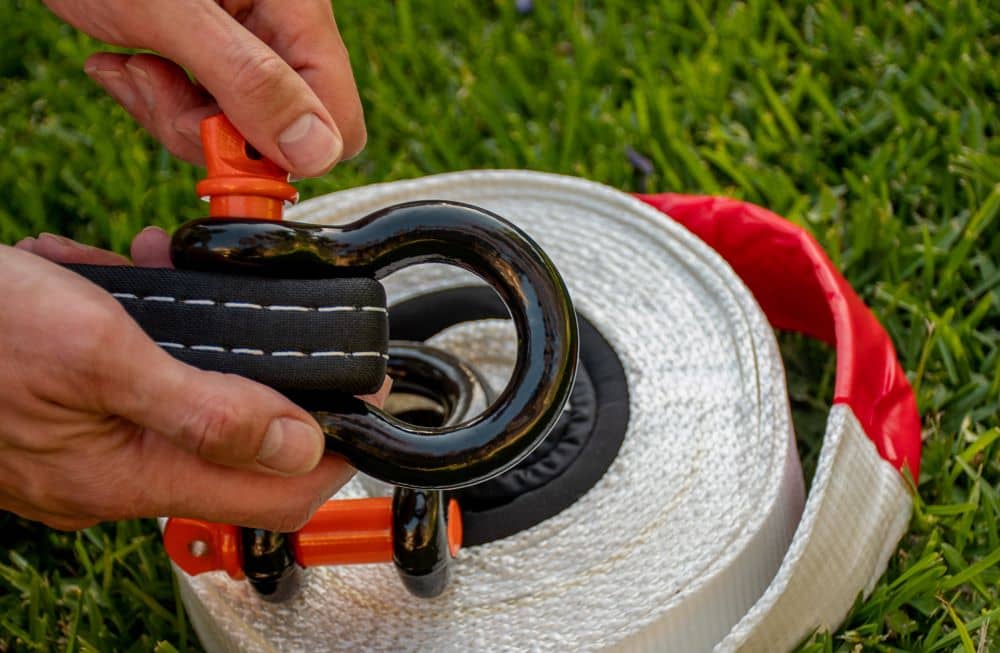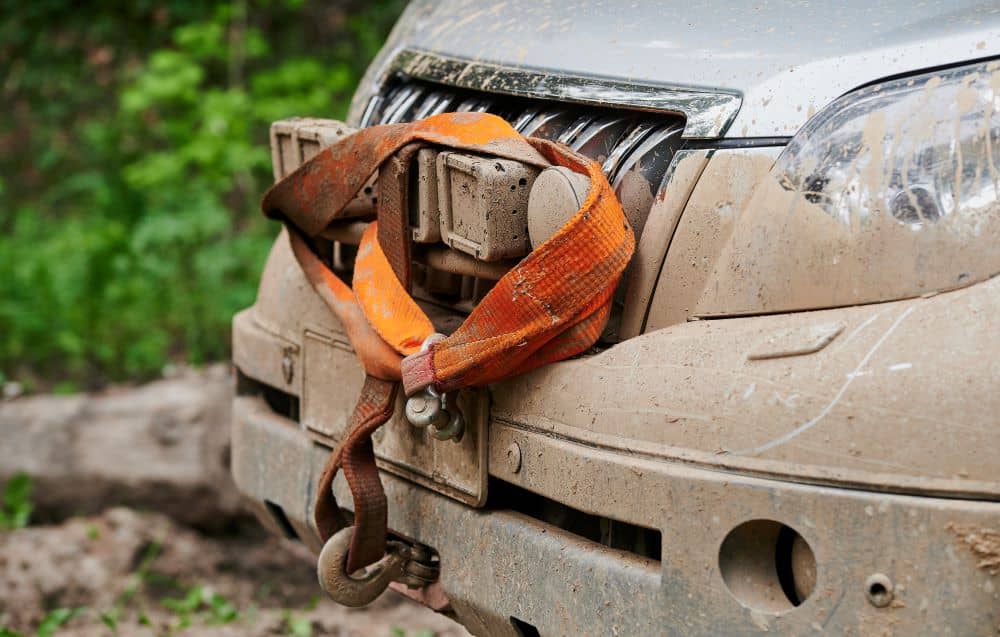Snatch straps are a popular topic among 4×4 owners. The tool can be helpful for those who like to live adventurously, but there’s a lot of confusion surrounding them. Drivers often have questions about the effectiveness of straps as well as whether or not they’re safe.
Today, we’ll answer some of the most common questions about snatch straps. Let’s start with what a snatch strap is.
What Is A Snatch Strap?
A snatch strap is essentially a strong rope made from woven nylon. The material can stretch up to 20% when in use and return to its original size afterwards.
These straps are usually 9 or 12 meters long but can come smaller and longer. They come in a variety of load ratings, meaning that you’ll need to know the approximate weight of the vehicle you intend to use the snatch on.
Having this tool around is handy if you live in areas known for snow, ice, or heavy rain. They allow you to retrieve a vehicle that can’t move on its own, without paying for a tow truck.
What Is A Snatch Strap Used For?
Snatch straps are used to help recover vehicles that are stuck in mud, sand, or snow. By attaching one end of the strap to the stuck vehicle you can use another vehicle to pull the bogged vehicle to safety.
The nylon webbing material stretches as the free car pulls forward which allows kinetic energy to be created. As long as enough energy is transferred, the bogged vehicle will come free. This is often called a multi-vehicle recovery.
Using a snatch strap is a safe alternative to traditional towing. Having one on-hand in your vehicle can save you time and money if you find yourself stuck.
When Should You Use A Snatch Strap?
Drivers can find themselves in all sorts of vehicle recovery situations. So how do you know when a strap is appropriate? Here’s what you should consider before attempting a multi-vehicle recovery.
- Before you call a friend for a vehicle assist, consider lowering your tire pressure. This spreads out the weight of your car and can help you get more traction.
- You can also try using a recovery board, or using other materials under your tires to create a surface they can grip.
- Always give driving out a second try. If you can still back the vehicle up, try doing so and taking another route out of the bogged area.
If none of these suggestions works, move on to using your snatch strap. The strap is designed specifically for bogged vehicles, so it should help you retrieve your car in most situations. You’ll need a second vehicle, so reach out to a friend to give you a hand.
How Does A Snatch Strap Work?
Snatch straps use kinetic energy to free a bogged vehicle. Before that can happen, the snatch strap has to be properly attached. Let’s go over how to use a snatch strap properly so you’re prepared if the situation arises.
- Attach the snatch strap to a sturdy recovery point on the vehicle that’s in distress. Examples include frame-mounted tow hooks, receiver hitches, or D-ring attachments on your bumper.
- Attach the other end of the snatch strap to the vehicle assisting in the recovery.
- Ensure the snatch strap is securely attached at both ends and can’t fly off or become detached.
- Never attach the strap to a steering component, a suspension component, or a tow ball. Doing so is dangerous and could result in harm to you or your vehicle.
- Have any person in the immediate area move far away from both vehicles.
- Have the driver of the recovery vehicle begin to accelerate slowly.
- Use hand signals, radios, or cell phones to communicate with the other driver.
Always follow manufacturer recommendations when using these kinds of tools. When used properly, they can help you recover your vehicle in a fast and safe manner.
Are Snatch Straps Dangerous?
Like most tools, a snatch strap can be dangerous when used improperly. To avoid injury, it’s important to ensure you’re attaching your strap to a sturdy recovery point. You should carefully follow the directions provided by the manufacturer when attaching the strap.
If the strap is securely attached and safety procedures are followed, there’s no reason they can’t be used safely. As an extra precaution, clear unnecessary people and equipment from the scene before beginning.
If you have trouble attaching the strap or don’t feel comfortable doing so, consider contacting a professional. It’s always better to be safe than to try to use a piece of equipment you’re not comfortable with.
How Do You Choose A Snatch Strap?
There are a lot of snatch straps on the market, so how do you know which is right for you? Here are a few quick guidelines that can help you choose the best snatch strap for you.
- Choose a strap that has a minimum breaking strength that’s two or three times the total weight of your vehicle.
- Look for a strap that can stretch by at least 20%.
- Be aware that snatch straps are also called recovery straps or tow straps.
- Research what the best strap is for your type of vehicle. Your car’s manufacturer or a qualified mechanic may have recommendations.
- Look for brands with high ratings and lots of user reviews.
- Decide how much length you need. Straps can come in sizes of 6 meters to 15 meters.
Snatch straps are an important tool to have if you’re into your 4×4 off-roading, enjoy going down 4wd tracks, or even if you just own a 4×4. Pick one up before your next adventure so you’re covered for every situation.

